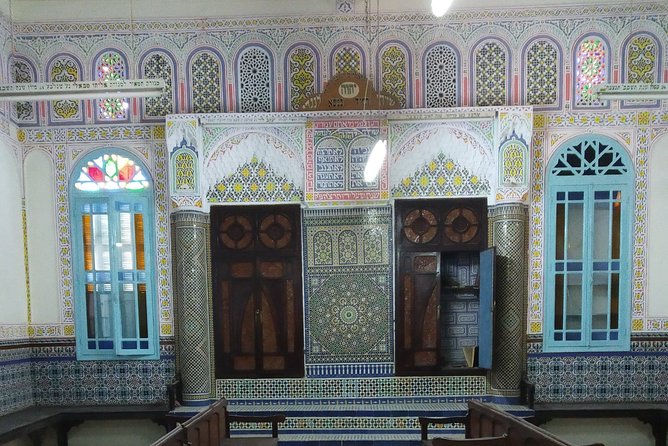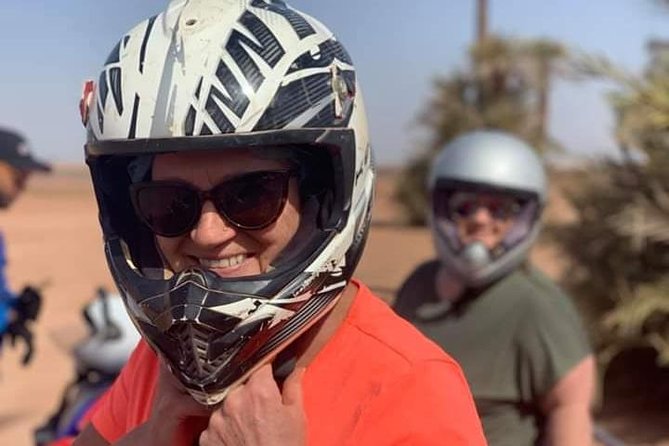Marrakesh Trip Overview
Morocco has existed since ancient times with different civilizations occupying the region because of its critical location. Marrakech used to be the old Capital of Morocco and a major crossroad for Caravans on their way to Europe. The city had trade of herbs, spices. I live in Marrakech and I know the whole city, so I will show you the hidden sites and help you understand the history of this red city. The presence of the Jews in Morocco is about 2000 years , and they were living in quarters called Mellah , In this tour you will discover the different architecture , buildings with balconies , they look like Spanish or European Style , The Jews and the Moors fled persecution from southern of Spain in 1492 and in different periods , you will walk through the quarter , take photos , visit the synagogue, jewish cemetry (no visit on Saturday) , see herbs and spices , learn about the history of the Jews in marrakech and all of Morocco Also visit some other major sites.
Additional Info
* Duration: 3 hours
* Starts: Marrakesh, Morocco
* Trip Category: Cultural & Theme Tours >> Cultural Tours
Explore Promoted Experiences
What to Expect When Visiting Marrakesh, Marrakesh-Safi, Morocco
Morocco has existed since ancient times with different civilizations occupying the region because of its critical location. Marrakech used to be the old Capital of Morocco and a major crossroad for Caravans on their way to Europe. The city had trade of herbs, spices. I live in Marrakech and I know the whole city, so I will show you the hidden sites and help you understand the history of this red city. The presence of the Jews in Morocco is about 2000 years , and they were living in quarters called Mellah , In this tour you will discover the different architecture , buildings with balconies , they look like Spanish or European Style , The Jews and the Moors fled persecution from southern of Spain in 1492 and in different periods , you will walk through the quarter , take photos , visit the synagogue, jewish cemetry (no visit on Saturday) , see herbs and spices , learn about the history of the Jews in marrakech and all of Morocco Also visit some other major sites.
Itinerary
This is a typical itinerary for this product
Stop At: Mellah, Marrakech Morocco
the Mellah is a term used to describe an area of residents of Jewish origin. It is generally surrounded by high walls to separate them from other population such as Christians and Muslims.
Since 1438, following the great wave of immigration of Jews from Spain fleeing the persecutions of the Reconquista, several urban mellahs were created on the Moroccan territory. From Fez to Meknès, from Essaouira to Taroudant, from Rabat and Sale, and in Marrakech. The Mellah of Marrakech is considered as one of the largest in Morocco. By its history and geography, it surprises and impresses us until its recent renewal wanted by King Mohamed VI.
Even if the presence of Jews has been documented since the 2nd century, the Jewish Mellah of Marrakech has only been recognized as such since 1558, the date of its creation by the authorities.
Throughout the Middle Ages, the population of the Jewish Mellah of Marrakech was estimated at 70,000 person. At the end of the 18th century, a figure of 35,000 was put forward. In 1936, 15,000 Jews were registered. Since the end of the Second World War and the creation of Israel in 1948, the Jewish population has been steadily decreasing. It now stands at 175 persons. Very few of them live in the original Mellah (less than 10 people), they preferred the comfort of the new city of Marrakech, Gueliz.
A quadrilateral of more than 18 hectares, the historic mellah is surrounded by large walls with 2 access doors on the outside (bab in Arabic) : one toward the city itself, the other on the cemetery.
The streets, the parallel or perpendicular internal lanes, with its high houses without windows, thebalcony buildings (some of them), however, gave it a certain regularity and homogeneity.
The Mellah was essentially composed of :
-riads (house of living).
-fondouks (or caravansérail : large house centred on an inner courtyard used as commercial warehouses, animal shelters and accommodation for merchants and travellers).
-commercial streets or souk (spices, fabrics, etc.).
-synagogues (up to thirty enumerated).
-places, more or less large.
The Square des Ferblantiers is the nerve centre of the mellah by day, the door toward the city opening into its centre, with Jewish craftsmen working in tinplate. A tradition that has been maintained since then until the Arabs nowdays. The souk of spices and the souk of jewellery were known and frequented by Muslims since the 16th century.
Duration: 1 hour 30 minutes
Stop At: Slat Al Azama Synagogue, R. Talmoud Torah, Marrakesh 40000, Morocco
A well-tended courtyard surrounds the Lazama Synagogue. Around the outer edges are curtains offering privacy to the members who live there. Beautiful hand-laid tiles covered many of the walls, often between the curtains.
Colour and patterns reflect the Jewish atmosphere, as does the Hebrew letters along the upper edge of the walls. While mostly blues and white are used in this courtyard.
A mezuzah hangs on the doorframe at the entrance to Lazama Synagogue. A mezuzah is a piece of parchment often in a decorative case. It is inscribed with specified Hebrew verses from the Torah.
Typically, a mezuzah is hung at the door of a Jewish home. In addition, some wear a mezuzah charm around their neck for protection.
Duration: 30 minutes
Pass By: Place des Ferblantiers, Mellah, Marrakech Morocco
The recently renovated Tinsmiths’ Square (Place des Ferblantiers) overlooks the Badi Palace by an arch, the entrance to the Spice Souk and the Mellah Souk on its left side, and the alley leading to the Bahia Palace. You will find shops, restaurants and snack bars and in a corner some tinsmiths.
The Spice Souk at the entrance of the great souk of the Mellah. You will find all the Moroccan spices, herb and herbal tea merchants, fabric shops to have you make clothes or decorative objects by local craftsmen.
The Kissaria of jewellers and goldsmiths (at the end of the square of the Tinsmiths’ Square, towards the Bahia Palace). Jewish creation taken over by the Muslim population since then, organized around 2 covered galleries. You can admire gold and silver coins, fibulas, Fatima’s hands and other Berber jewellery.
Stop At: Miara Jewish Cemetery, Av. Taoulat El Miara, Marrakech 45000, Morocco
Dating from the 16th century, is the largest Jewish cemetery in Morocco. Divided into 3 distinct edges (men, women, children), it is the only one to be so because of the singular custom (minhaggim) of the Jews of the city of Marrakech.
Duration: 30 minutes





